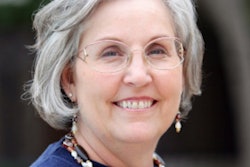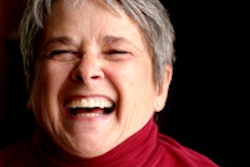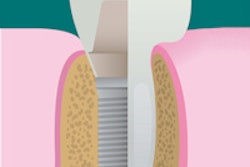
A tool that evaluates whether older women are at risk for osteoporotic fractures may also be able to determine if they are at risk for periodontal disease, according to a recent study published in Menopause.
Postmenopausal women whose score on the World Health Organization Fracture Risk Assessment Tool (FRAX) indicated that they were at major risk for OPF were also significantly more likely to have periodontitis than controls, the researchers found (Menopause, January 2015, Vol. 22:1, pp. 75-78).
 Leena Palomo, DDS, MSD.
Leena Palomo, DDS, MSD."There's a lot of overlap between what the FRAX test uses in its assessment and the known risks to gum disease, according to previous studies," said study author Leena Palomo, DDS, MSD, an associate professor and the director of the DMD Periodontics program at Case Western Reserve University School of Dental Medicine. "One is smoking."
When Dr. Palomo noticed that FRAX scores take into account many of the risk factors for periodontal disease, she and her colleagues from the Case/Cleveland Clinic Postmenopausal Wellness Collaboration set out to find if there was a correlation between a high FRAX score and evidence of periodontitis.
The researchers compared postmenopausal women with major OPF risk, defined as a FRAX score greater than 20%, to a control group of women with more normal FRAX scores. Women in both the high-risk and control groups did not smoke, had gone through menopause within the past 10 years, did not have diabetes, were not on diabetes medication, and were not on hormonal replacement therapy or bone loss medication.
Dr. Palomo and colleagues found that the women with high FRAX scores also showed the strongest signs of periodontal disease, despite the fact that their oral hygiene scores didn't significantly differ from those of the control group.
Tools to better recognize periodontal disease
The findings suggest that physicians treating osteoporotic women may be able to use the FRAX test to determine if their patient should see a periodontist, according to the study authors.
While periodontists have been good about referring patients with clean mouths yet worsening periodontal disease to physicians, the reverse is not always true, according to Dr. Palomo. Physicians and other professionals treating postmenopausal women often do not have the tools available bedside to evaluate a patient's oral health.
“They [physicians] don't know how to screen in a cost-effective and time-flow kind of way which women ought to be referred to a periodontist.”
"They don't know how to screen in a cost-effective and time-flow kind of way which women ought to be referred to a periodontist," she explained. "This study hopes to bridge that. It's a first step."
Dr. Palomo describes the study as just the beginning of better diagnosing and treating periodontal disease in postmenopausal women.
"One study isn't enough to change the way people do business," she said. "I think it's more like just putting your toe in the water. I think a lot more still needs to be done."
Postmenopausal women sometimes don't have the proper health coverage to address periodontal disease, she noted.
"Very often the obstacle isn't only that the physician didn't refer the patient, but now how the patient is going to pay for those services," she said.
Advice for working with older women
Dr. Palomo did note there is a trend of professional collaboration to improve the quality of dental care and overall health for postmenopausal women.
"The last 10 years or so has been ripe with conversations between pharmacy, between physicians dealing with osteoporosis, and between dentists," Dr. Palomo said. "It's a great time to see all these thought processes coming together."
The following is her advice for dentists working with older women:
- Take a good health history, including medications.
- Be in communication with a patient's physician and other doctors.
- Really listen to patients: Take in the information that they provide and use it responsibly.
When the medical community works together, postmenopausal women at risk for fractures can have healthier bones and mouths.
"I think the big winner in this is women," Dr. Palomo said. "The more we know, the better outcomes can be, and the longer osteoporotic women can lead happy lives."



















